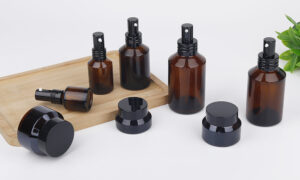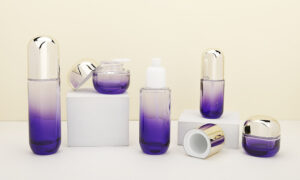How are cosmetic glass bottles colored? What are the main functions of colored glass?
Cosmetic glass bottles are typically colored through a process known as glass coloring or glass tinting. Here are a few common methods used to color glass bottles:
1. Colored Glass Batch: During the manufacturing process, specific metal oxides or metallic salts are added to the glass batch mixture before melting. These additives, such as cobalt oxide for blue, iron oxide for green, or selenium for red, impart color to the glass. The type and amount of additives used determine the intensity and shade of the color.
2. Glass Coating: Another method involves applying a colored coating or lacquer on the surface of the glass bottle. This coating can be in various shades and provides the desired color. However, it is worth noting that coated glass bottles may require special care during handling to avoid scratching or damaging the coating.

The main functions of colored glass bottles in the cosmetic industry include:
1. Light Protection: Colored glass helps to protect cosmetic products from harmful ultraviolet (UV) radiation. Certain ingredients in cosmetics, such as fragrances, essential oils, or light-sensitive compounds, can degrade when exposed to UV light. Colored glass, particularly amber or blue, reduces UV transmission and helps preserve the product’s quality and efficacy.
2. Aesthetic Appeal: Colored glass bottles enhance the visual appeal of cosmetic products. They can be used to match branding elements, differentiate product lines, or create a luxurious and unique packaging experience. The color of the glass can evoke specific emotions or convey specific product attributes.

3. Product Preservation: Colored glass bottles can also provide protection against oxidation and light-induced degradation of certain cosmetic ingredients. By reducing the exposure to ambient light and oxygen, they help extend the shelf life of the product.
4. Marketing and Branding: The color of the glass bottle can contribute to the overall brand image and product positioning. Different colors may convey different messages or target specific consumer preferences. For example, green may be associated with natural or organic products, while black can represent sophistication or luxury.

It’s important to note that the specific choice of colored glass depends on the product’s requirements, light sensitivity, and branding considerations.
